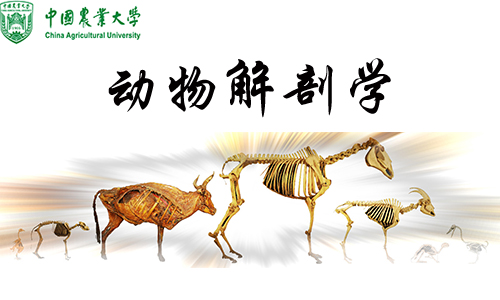
当前课程知识点:Diagnostics in Chinese Medicine > Week 9 Diagnosis methods: Inspection of tongue > 7.1 Outline of tongue inspection > 7.1.3 The method and precaution of tongue examination
返回《Diagnostics in Chinese Medicine》慕课在线视频课程列表
返回《Diagnostics in Chinese Medicine》慕课在线视频列表
同学们好 下面我们来看看舌诊的方法和注意事项
首先我们来看一看望舌的体位和伸舌姿势
我们先来学习舌诊的体位和伸舌姿势
受检者正坐位 重病患者卧位也可
受检者面向光亮处
使充足而柔和的自然光线直射口内
避开有色门窗和周围色光较强的有色物体
以免舌的颜色产生假象
要尽量张开口
昏迷病人可用压舌板撬开口
或用开口器
总之要充分的暴露舌象
伸舌要自然放松 毫不用力
舌面应平展舒张 舌尖自然垂向下唇
如果伸舌过分用力或伸舌过久 会产生假象
所以观察时动作要敏捷
舌诊时要按一定的顺序进行观察
一般先查看舌尖 再看舌中 舌边 最后看舌根部
由于舌质的颜色容易变化
而舌苔一般不会随观察的时间长短而变化
因此 望舌应该先看舌质
再查看舌苔
若一次望舌判断不准
可让病人休息片刻之后 再重新望舌
除了通过望诊了解舌象的特征之外
为了使诊断更加准确
必要时还应配合其他诊察方法
比如 刮舌验苔法
可用消毒压舌板的边缘
在舌面上由舌根向舌尖刮三五次
若刮之不去
或刮而留有污渍 多为里实证
若刮之即去 舌体明净光滑者
多为虚证
再比如揩舌
可用消毒纱布卷在食指上
蘸少许清洁水
在舌面上揩抹数次
这两种方法可以鉴别舌苔的有根和无根
以及是否属染苔
此外 还可以询问舌上味觉的情况
舌体是否有疼痛 麻木 灼辣等异常的感觉
舌体运动是否灵活等等 以协助诊断
诊舌时 为了使信息准确
必须注意排除各种
操作因素所造成的虚假舌象
我们要注意以下几点
第一 需要注意光线的影响
望舌时 以白天充足而柔和的自然光线为佳
如果在室内 或者暗处
以日关灯为好
避免有色的门窗或者是光源
比如
光线过暗 可使舌色暗滞
白炽灯下或手电筒下 可使舌苔变黄等等
第二 需要注意饮食或药物的影响
由于某些饮食或者药物
会使舌苔染色 称为染苔
比如
喝牛奶豆浆 会使舌苔变白
吃橘子 会使舌苔变黄
吃乌梅 橄榄 或长期吸烟
会使舌苔变黑等等
染苔不属病变的舌苔
由于干扰了舌象信息的收集 因此要尽量避免
如果看病前
吃了一些导致染苔的食物或者是药物
最好先刷牙或漱口之后 再看医生
第三 要注意口腔对舌象的影响
比如
缺牙者 可造成同侧舌苔变厚
镶牙者 可使舌边留有齿印
睡觉张口呼吸者
可使舌苔增厚 变干等等
以上这些因素所致的舌象的异常
都不能作为机体的病理征象
临床上应该仔细鉴别 以免误诊
本节课就讲到这里
-Introductory remark
--QQ groups、WeChat public account
-Introduction
--【Discussion 1】Why do you want to take this course?
-Unit test for Introduction
-1.1 Yin-yang theory
-1.2 The theory of five elements
--1.2.1 The theory of five elements
--1.2.2 Application of the theory of five elements
-Frequently Asked Questions
-Unit test for week 1
-2.0 Outline
--【Discussion 2】How to understand the holistic view centered on the Zang Fu theory?
-2.1 Liver
--【Discussion 3】Why is repose more important than vigorous exercise in recuperation for patients with
-2.2 Heart
-2.3 Spleen
-2.4 Lung
--2.4 Lung
-2.5 Kidney
-2.6 Six fu organs
-Frequently Asked Questions
-Unit test for week 2
-3.1 Qi
--3.1 Qi
-3.2 Blood
-3.3 Body fluid
-3.4 The relationship of qi, blood and body fluid
--3.4 The relationship of qi, blood and body fluid
--【Discussion 4】A discussion about the theory of qi, blood and body fluid
-Frequently Asked Questions
-Unit test for week 3
-4.0 Outline
-4.1 Six exogenous factors
--4.1.2 Nature and pathogenicity of wind and cold
--4.1.3 Nature and pathogenicity of summer heat and damp
--4.1.4 Nature and pathogenicity of dryness and fire
-4.2 Etiology of visceral impairment
--4.2 Etiology of visceral impairment
-Frequently Asked Questions
-Unit test for week 4
-5.0 Outline of inquiry
--【Discussion 5】If you were a patient, how would you describe your condition to your doctor first?
-5.1 Inquiry of Chills and fever
--5.1.1 Chills and fever(Aversion to cold with fever)
--5.1.2 Chills and fever(Chills without fever)
--5.1.3 Chills and fever(Fever without chills)
--5.1.4 Chills and fever(Alternative chills and fever)
--【Discussion 6】How to understand "if you have clinical manifestations of cold, that is exterior syndr
-5.2 Inquiry of perspiration
-Frequently Asked Questions
-Unit test for week 5
-5.3 Inquiring of pain
--【Discussion 7】How to understand "stagnation leading to pain and innourish leading to pain"?
-5.4 Inquiring of head, body, thorax and abdomen
--5.4 Inquiring of head, body, thorax and abdomen
-5.5 Inquiring of ears and eyes
--5.5 Inquiring of ears and eyes
-5.6 Inquiring of sleep
-5.7 Inquiring of food and drink, appetite and taste
--5.7 Inquiring of food and drink, appetite and taste
-5.8 Inquiring of defecation and urination
--5.8.1 Inquiring of defecation
--5.8.2 Inquiring of urination
-5.9 Inquiring of infantile and women's disease
--5.9 Inquiring of infantile and women's disease
-Unit test for week 6
-6.0 Outline of Observation
--【Discussion 8】Please use the whole body inspection (including the expression, complexion and figure)
-6.1.1 Observation of vitality
--6.1.1 Observation of vitality
-6.1.2 Observation of the color
--6.1.2.1 The content, principles of inspection of the color
--6.1.2.2 Indication of diseases by five colors
--【Discussion 9】How do you understand the normal complexion of a normal people?
-6.1.3 Observation of the appearance
--6.1.3 Observation of the appearance
-6.1.4 Observation of figure and posture
--6.1.4 Observation of figure and posture
-Unit test for week 7
-6.2.1 Observation of head and face
--6.2.1 Observation of head and face
-6.2.2 Observation of five sensory organs
--6.2.2.1Observation of five sensory organs(observation of eyes,ears,nose)
--6.2.2.2Observation of five sensory organs(observation of lips,teeth and gums,throat)
-6.2.3 Observation of body
-6.2.4 Observation of limbs
-6.2.5 Observation of two lower orifices
--6.2.5 Observation of two lower orifices
-6.2.6 Observation of skin
-6.3 Observation of excreta
-6.4 Observation of infantile fingerprints
--6.4 Observation of infantile fingerprints
-Frequently Asked Questions
-Unit test for week 8
-7.1 Outline of tongue inspection
--7.1.1 The morphology and structure of the tongue
--7.1.2 The principle of tongue examination
--7.1.3 The method and precaution of tongue examination
--7.1.4 The content of tongue examination, normal tongue
-7.2 Inspection of tongue structure
--7.2.1 Observe the color of tongue
--7.2.2 Observe the shape of tongue
--7.2.3 Observe the states of tongue
--7.2.4 Observation of sublingual vein
-7.3 Observation of tongue coating
--7.3.1 Observation of coating texture
--7.3.2 Observe the color of coating
-7.4 Clinical significance of tongue diagnosis
--7.4 Clinical significance of tongue diagnosis
--【Discussion 10】Why to observe the tongue can be used to diagnose disease?
-Unit test for week 9
-8.1 The principle of pulse examination
--8.1 The principle of pulse examination
-8.2 The regions and methods of pulse examination
--8.2 The regions and methods of pulse examination
-8.3 The elements of pulse examination and the normal pulse
--8.3 The elements of pulse examination and the normal pulse
-8.4 Characteristics and significance of pulse
--8.4.1 Superficial pulse, deep pulse, slow pulse, rapid pulse
--8.4.2 Surging pulse, thin pulse, long pulse, short pulse
--8.4.3 Feeble pulse, forceful pulse, slippery pulse, uneven
--8.4.4 Taut pulse, tense pulse,soggy pulse, moderate pulse
--8.4.5 Knotted, slow-regular-intermittent, irregularly abrupt
-8.5 Similar pulse, concurrent pulse, pulse indicating deterioration of visceral qi۞
--8.5 Similar pulse, concurrent pulse, pulse indicating deterioration of visceral qi۞
--【Discussion 11】Why is complex pulse more common than single-factor pulse?
-8.6 Women’s pulse, children’s pulse
--8.6 Women’s pulse, children’s pulse
-8.7 The clinical significance of pulse diagnosis
--8.7 The clinical significance of pulse diagnosis
-Unit test for week 10
-9.1 Listening
-9.2.1 Abnormal sound
-9.2.2 Abnormal language
-9.2.3 Respiratory abnormality
--9.2.3 Respiratory abnormality
-9.2.4 Cough
--【Discussion 12】How to observe the patient's cough sound and sputum changes to determine whether the
-9.2.5 Abnormal sounds of the stomach and intestines
--9.2.5 Abnormal sounds of the stomach and intestines
-9.3 Smelling
--【Discussion 13】How to diagnose by smelling?
-Unit test for week 11
-10.1 The method, meaning and precautions of palpation
--10.1 The method, meaning and precautions of palpation
-10.2 Contents of palpation
--10.2.1 Palpating chest and hypochondrium
--10.2.2 Palpating stomach and abdomen
--10.2.4 Palpating hands and feet, palpating acupoints
--【Discussion 14】How to determine whether external or internal injuries?
-Unit test for week 12
-Conclusion
-Final Exam
--Final Exam


